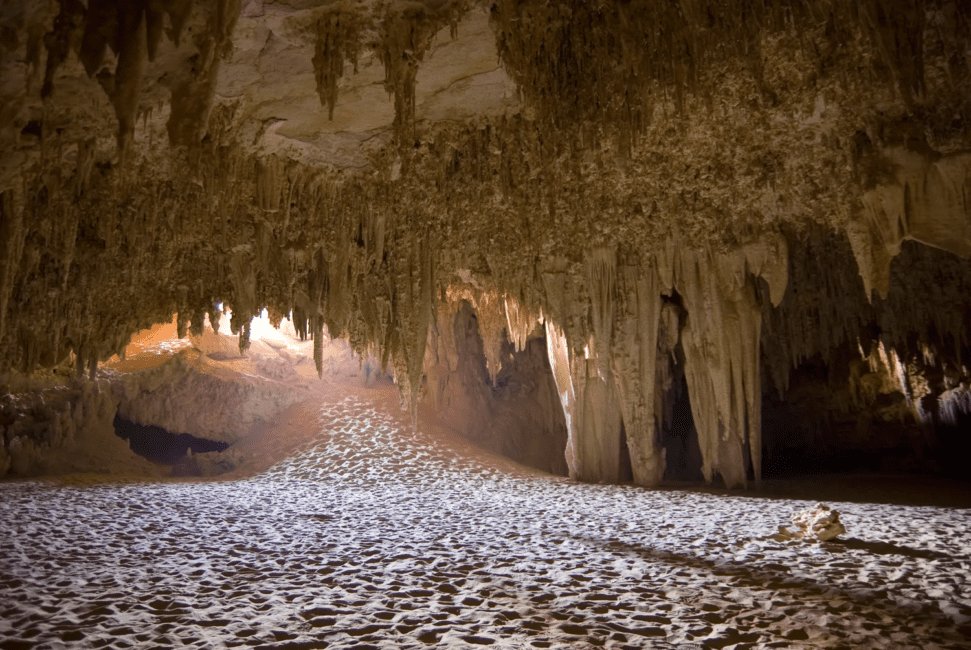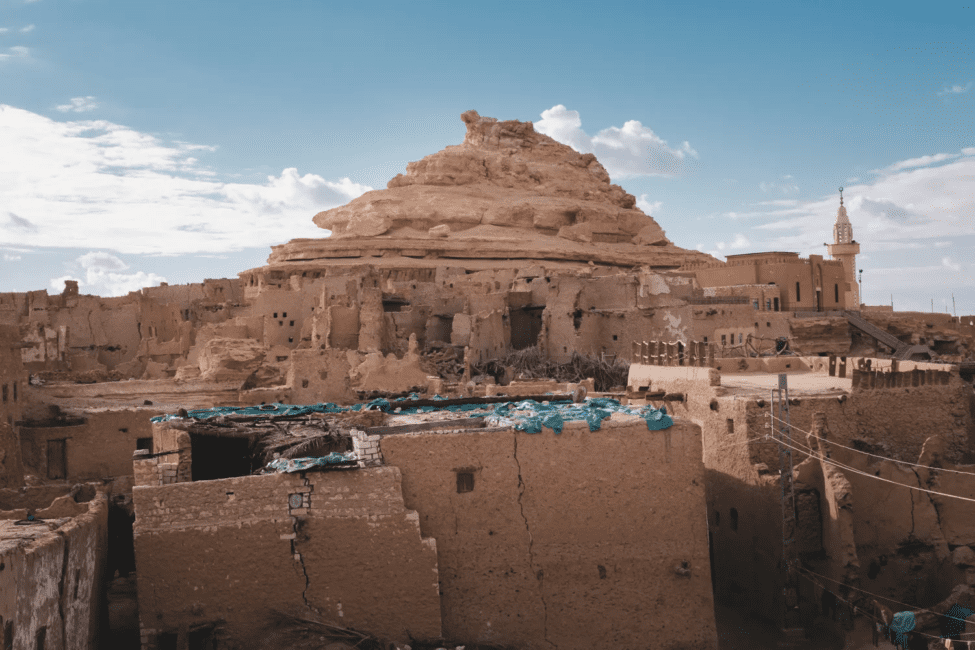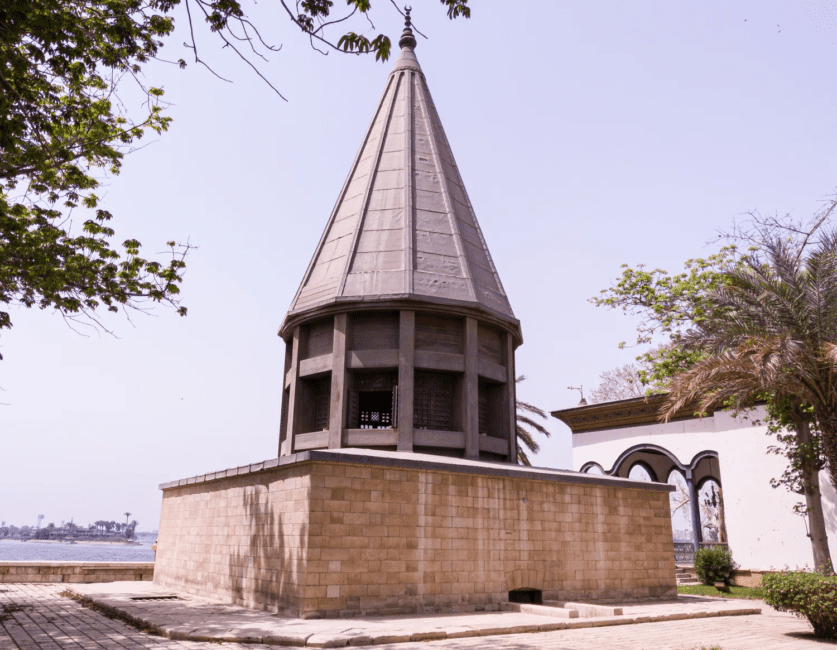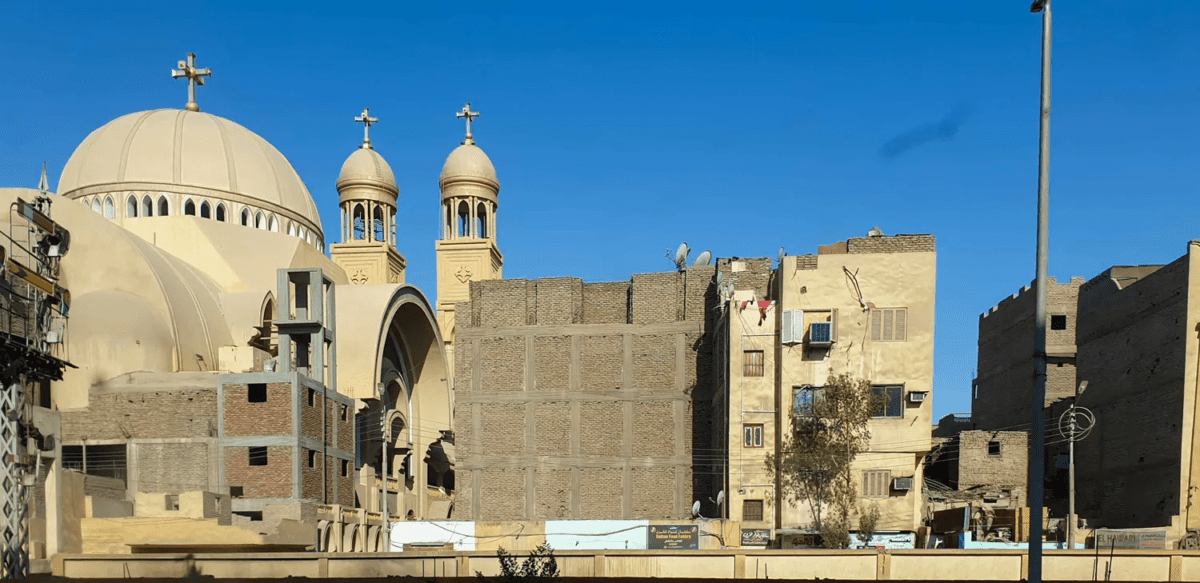Egypt stands as a must-visit destination, captivating travelers with its incredible Pyramids of Giza, picturesque streets, and the enchanting Luxor temple complex waiting to be explored.
Spanning from the Pharaonic periods through the Roman era to the 19th-century modern Renaissance, and witnessing the evolution of the music and arts scene in the 20th century, Egypt’s history is a tapestry of captivating tales.
For those seeking to venture beyond the well-trodden tourist paths, Egypt unveils hidden gems that add an extra layer of allure to the African nation. Here are ten of the best off-the-beaten-track spots waiting to be discovered by intrepid travelers:
1. The Museum Of Egyptian National Railways, Cairo

The Museum of Egyptian National Railways stands as a captivating hidden gem on the bucket list of must-visit destinations in Egypt.
Situated within Ramses Railway Station, this museum offers a unique opportunity to delve into the fascinating narrative of the world’s oldest railways, marking the inaugural railways in Africa and the Middle East.
Established in 1933, the museum unfolds a treasure trove of features, providing visitors with a comprehensive insight into the evolution of railway history.
Enthusiasts and curious travelers can explore a diverse array of exhibits, including rail tracks, engine parts, ancient Egyptian trains, and other elements that narrate the captivating journey of rail transportation in the region.
The museum not only showcases the technological advancements in the railway industry but also serves as a testament to the significant role railways have played in shaping the history and development of Egypt.
For those seeking an off-the-beaten-path experience and a deeper understanding of Egypt’s transportation heritage, the Museum of Egyptian National Railways proves to be a hidden gem that adds a unique layer to the cultural and historical tapestry of the country.
2. The Catacombs Of Kom Al-Shoqafa, Alexandria

Often referred to as the Catacombs of Alexandria, the Catacombs of Kom Al-Shoqafa offer one of the most unique and captivating experiences in Egypt.
This well-preserved site stands as the largest and most significant burial ground in the country, with a rich history dating back to the Greco-Roman era. Originally constructed as a tomb for a family, the catacombs later expanded into a sprawling burial site.
Discovered at the beginning of the 20th century, the Catacombs of Kom Al-Shoqafa reveal a remarkable blend of ancient Egyptian, Roman, Pharaonic, and Hellenistic influences.
The intricate details and architectural marvels found within this burial complex showcase the diverse cultural and historical influences that have shaped Egypt over the centuries.
Read Also: The Ultimate Guide to Unlocking the Potential of Garbage Wastes
What makes Kom Al-Shoqafa even more remarkable is its relative obscurity, often overshadowed by more well-known attractions. This hidden gem provides a respite from the crowds, making it an ideal destination for those seeking a less-touristy experience in Egypt.
As visitors explore the catacombs, they are transported through time, discovering the intertwining threads of history that have left an indelible mark on this underground marvel.
3. Djara Cave, El-Dakhla Oasis

Nestled in the heart of the Western Desert, the Djara Cave stands as a hidden treasure among the many off-the-beaten-path gems in Egypt, offering a serene escape from the bustling tourist crowds.
This cave, adorned with a ceiling crafted from limestone stalactites, boasts a spectacular beauty that rivals more popular attractions in the country. Situated between the enchanting Bahariya Oasis and Assiut, the Djara Cave remains one of the world’s most significant caves, deserving recognition and admiration.
Discovered by the German explorer Gerha Red Rolfes in 1873, the cave unfolds a captivating tapestry of natural wonders. Visitors are treated to the sight of stalagmites and stalactites, showcasing the intricate formations created by the passage of time.
The cave also reveals ancient drawings, providing a glimpse into the lives of primitive people who once inhabited the surrounding area. Scenes of hunting and other activities depicted on the cave walls serve as a testament to the rich history and cultural significance of this hidden marvel.
For those seeking a quieter and more contemplative experience in Egypt, the Djara Cave offers a tranquil haven, inviting travelers to connect with the awe-inspiring beauty of the natural world and the echoes of ancient civilizations that have left their mark within its depths.
4. Shali Fortress, Old Siwa

Embarking on a journey from Cairo to Siwa Oasis? Make sure to include the stunning Shali Fortress in your itinerary as it stands among the most captivating attractions in Egypt.
Situated at the heart of Siwa City, this castle is a historical gem dating back to the 13th century. What sets Shali Fortress apart is its unique construction material – ‘kershef,’ a mixture of mud and salt rocks extracted from the surrounding salt lakes.
As visitors explore the fortress, they are immersed in the rich history of Siwa Oasis, with Shali serving as a testament to the architectural prowess of its time. Climbing to the top of the fortress rewards travelers with panoramic views of the Siwa Oasis, a breathtaking vista that provides a sense of the oasis’s vast beauty.
Shali Fortress, with its ancient charm and commanding presence, invites travelers to step back in time and experience the cultural and historical tapestry of Siwa City. From its salt rock construction to the vistas from its summit, this historical monument offers a memorable and enriching experience for those venturing into the captivating landscapes of Siwa Oasis.
5. Colored Canyon, Nuweiba

Nestled in the picturesque village of Nuweiba, the Colored Canyon stands as one of Egypt’s most captivating natural wonders. Situated in a laid-back destination known for its tranquil atmosphere, this canyon is a hidden gem waiting to be discovered.
While Sinai is renowned for its stunning beaches and an array of water sports, the Colored Canyon adds a unique and underrated dimension to the region’s attractions, making it a must-visit destination for every tourist’s bucket list.
The Colored Canyon is a network of rocks, some reaching an impressive height of 40 meters. As visitors explore this geological marvel, they are treated to a mesmerizing display of vibrant hues and intricate formations, creating a surreal and otherworldly landscape.
The canyon’s name is derived from the kaleidoscope of colors painted across its walls, a result of mineral deposits and the passage of time.
For those seeking a break from the coastal scenes and water activities, the Colored Canyon offers a refreshing and awe-inspiring alternative. It stands as a testament to the diverse natural beauty that Egypt has to offer, showcasing the country’s rich geological heritage.
As travelers venture through the winding paths of the canyon, they are transported to a realm of striking landscapes and quiet majesty, making the Colored Canyon an essential stop for those eager to explore the hidden treasures of Egypt.
6. Nilometer, Rhoda Island

Nestled on Cairo’s Rhoda Island, the Nilometer stands as one of Egypt’s best-hidden gems, offering a unique and historically significant experience for those willing to explore off the beaten path. Situated among the places in Cairo that can be conveniently explored on foot, the Nilometer traces its origins back to the year 861 AD.
Functioning as a vital tool in ancient times, the Nilometer served the crucial purpose of measuring the water level of the River Nile. Beyond mere measurement, it played a pivotal role in predicting floods or famine, providing valuable insights into the agricultural and environmental conditions of the region.
The architecture of the Nilometer includes a staircase that was exclusively utilized by ancient rulers, priests, and kings.
This staircase allowed them to descend and closely monitor the conditions of the Nile River. While the Nilometer is no longer in active use, its historical significance and architectural marvel make it a compelling destination for modern-day explorers.
Visitors to Cairo’s Nilometer are transported back in time, gaining a glimpse into the ancient practices and knowledge that shaped the region’s agricultural and societal dynamics.
The historical resonance, combined with the unique architectural features, renders the Nilometer a must-visit site, offering a rich and immersive experience for those eager to uncover the hidden treasures of Egypt.
7. The Cairo Genizah, Cairo

The Cairo Genizah stands as an invaluable collection of approximately 400,000 pages of ancient documents, providing a unique and insightful window into Jewish life in the city of Cairo.
Housed within the Ben Ezra Synagogue in Old Cairo, these manuscripts are regarded as one of Egypt’s most significant historical discoveries spanning the period between the 11th and 19th centuries.
This vast collection offers a remarkable tapestry of history, capturing over a millennium of diverse cultural and religious narratives.
Among the treasures contained in the Cairo Genizah are early Christian texts, showcasing the rich tapestry of religious and cultural exchanges that took place in the region. The documents also extend to the late 19th century, offering a comprehensive view of historical events, societal dynamics, and cultural interactions.
The Cairo Genizah manuscripts are not limited to the local context; they encompass a global perspective, with texts originating from Central Asia, Saharan Africa, various spots in the Indian Ocean, and transalpine Europe.
This broad geographical range reflects the interconnectedness of civilizations and trade routes that played a crucial role in shaping the history of the region.
For history enthusiasts, scholars, and curious visitors, the Cairo Genizah provides a captivating journey through time, unraveling stories and insights that contribute to our understanding of the intricate web of human history and cultural exchange.
This repository of ancient documents is a testament to the enduring importance of preserving and studying historical artifacts for the enrichment of our collective knowledge.
Read Also: How to Cancel a Planet Fitness Membership
